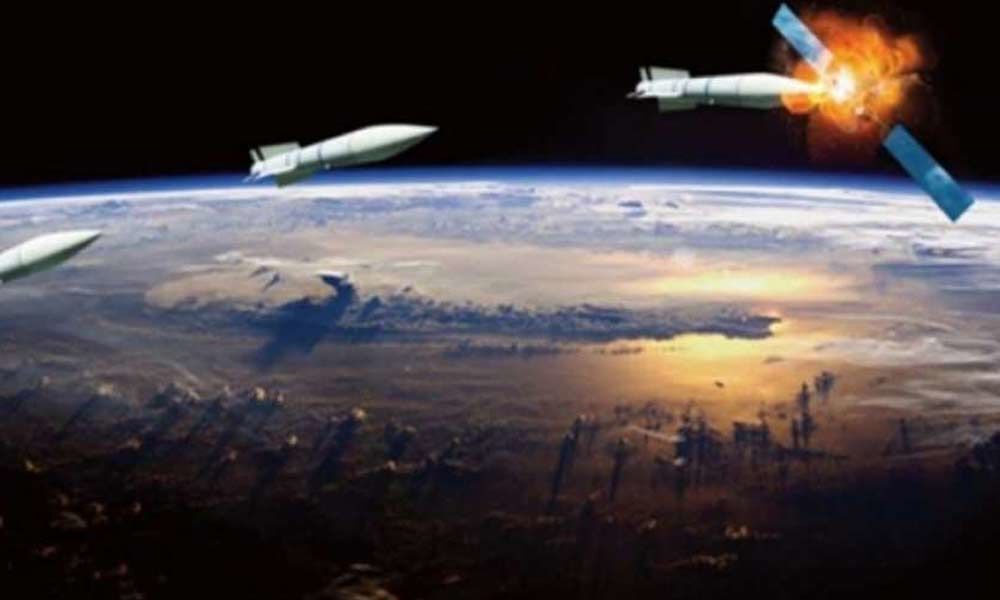US tracking 250-270 objects from Indian ASAT test debris; ISS not at risk: Pentagon

Washington: The US is tracking 250-270 objects of debris in the space generated due to India's anti-satellite (ASAT) missile test in lower earth orbit, but the International Space Station or ISS is not at risk, the Pentagon said Friday.
US Strategic Command's Joint Force Space Component Command (JFSCC) said 250 pieces of debris associated with an Indian ASAT launch that occurred on Wednesday are being actively tracked.
"Debris from the event is being actively monitored by the JFSCC, and conjunction notifications are being issued to satellite owners/operators in accordance with standard notification processes through the Department of Defense's public space situational awareness sharing website HYPERLINK "http://www.space-track.org," it said.
The JFSCC said it will continue to actively track debris associated with the event and issue close approach notifications as required until the debris enters the earth's atmosphere.
US Air Force Space Command Commander Lt Gen David D Thompson told lawmakers during a Congressional hearing on Thursday that the JFSCC and Air Force's 18 space control Squadron are currently "tracking about 270 different objects in the debris" field.
Responding to questions from members of the Senate Armed Services Subcommittee on Strategic Forces, he said the number is going to grow as the debris field spreads out as the US collects more sensor information.
Thompson, however, refrained from giving any further details of the debris.
"But we do know the altitude at which it occurred. We immediately started providing public notice on our space track website and will provide direct notification to satellite operators, if those satellites are under threat," he said.
Responding to questions from lawmakers, Thompson said, "At this point in time, the International Space Station is not at risk."
The ISS orbits over 100 km higher than the orbit at which India carried out the ASAT test.
"That's another thing that we do and provide warning routinely. That's just an example of -no other nation --no other military force, no other civil or other body could have detected characterised and begun warning and providing the world, the way we do with air force and other joint assets," Thompson said.
Astronomer Jonathan McDowell from the prestigious Harvard-Smithsonian Center for Astrophysics said India acted in a less irresponsible manner than the Chinese in doing the test.
"We don't know yet how much debris and how high. The United States has said that it's tracking about 250 pieces. But it will take them at least a few days, if not a few weeks to figure to catalog those pieces," he told PTI.
Once the cataloging is done, only then one could analyses how bad the situation is, he added.
Responding to a question, McDowell, who has been following India's space program since 1970s, described the ASAT test as a "much more aggressive stance" even though it is presented as a defensive measure.
This is reflective of the ambitious and military side of the Indian space programme and is in response to the China's aggressive space militarisation programme, he said.
Opposed to such tests, McDowell said, the Indian ASAT test was "relatively responsible" or "less responsible" than the Chinese ASAT test.
"Although I'm opposed to the test, I think that if you're going to do a test, that's a better way to do it.
"There will be debris that ends up in higher orbit but not as much and not as long left. The test at level will ensure that the debris doesn't stay up for long periods of time, in contrast to what happened with the Chinese test, which was much higher up," he said.
"So that is relatively responsible. Certainly they (Indians) have learned from the mistakes of the Chinese," said the American astronomer. He said the Chinese debris hundreds of pieces in worst possible orbit - are still in the space.
The Indian debris might vanish and burn up when they come down in the next few months, while that of the Chinese might take decades to come down, McDowell said. Well known space professional, Brian Weeden said China is one reason for India's test.
"India sees itself in competition with China for regional power and prestige and has been internally debating its own demonstration ever since the Chinese ASAT test in 2007," he said.
"The other factor is India's concern about being one of the "have nots" for ASAT weapons like they were for nuclear weapons, in the event of a future ban on ASAT testing," Weeden said.
But more tests like this risk creating space debris that could impact commercial business models for space, plus many of these new space companies feel strongly about social responsibility, he added.




















